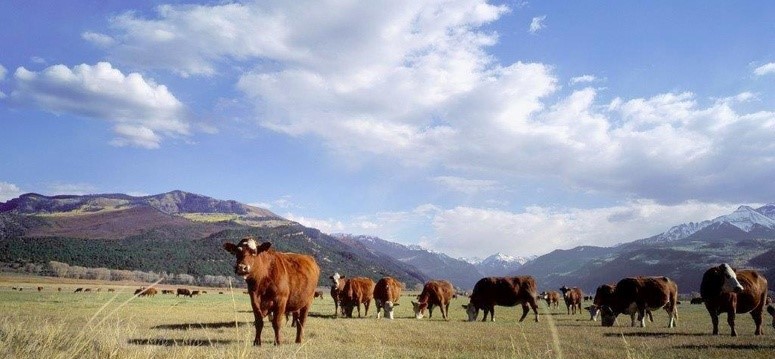University of Calgary researcher leads three-year study using predictive modeling to better control parasitic worms on cattle ranches.
October 29, 2018

When cattle graze on pastures, parasitic roundworm infections are an inevitable result, according to researchers at the University of Calgary in Alberta. Every year, these parasites result in around $2 billion in production loss to the North American cattle industry due to their negative impacts on calf growth.
Although ranchers routinely treat their animals with drugs to control parasitic worms, treatments are generally not tailored to the specific needs of a herd, the researchers said, noting that using a blanket approach not only leads to unnecessary economic loss but also drives the parasites to become resistant to the drugs.
The Beef Cattle Research Council (BCRC) has awarded an $800,000 grant to a team of researchers, led by Dr. John Gilleard with the University of Calgary Faculty of Veterinary Medicine (UCVM), to improve parasitic roundworm control in cattle. The three-year study will quantify the economic impacts of parasites, investigate their transmission patterns and use predictive computer models to implement more evidence-based control.
As cattle graze in pastures, along with grass, they also ingest microscopic roundworm larvae present in the grass, UCVM said. These larvae then develop into adult parasites in the gut. A single adult roundworm can produce thousands of eggs every day, and as infections build up over the grazing season, calves can end up with tens of thousands of parasites.
“Being able to predict pasture contamination rates based on grazing patterns and climatic conditions would help us develop more effective parasite treatment protocols,” Gilleard said.
Gilleard and his colleagues are studying 20 herds of cattle at ranches across western Canada. They’ll monitor weather conditions on each ranch, including soil temperature, humidity and precipitation, and study how eggs of different parasite species develop and spread onto the pasture from the cattle feces.
The researchers will also create artificial feces — fake cow pats — to see how the parasite eggs migrate in different weather conditions.
“Experiments will be done in greenhouse facilities at the Agri-food Canada Research Centre in Lethbridge [Alb.], incubators here in Calgary and in our study farms across western Canada,” Gilleard explained. “We will use novel DNA sequencing-based tools that we have developed here in Calgary to determine how the different parasite species differ in their ecology and transmission patterns.”
Maximize production with minimal drug use
Armed with the results from these controlled experiments, the researchers will then modify existing predictive computer models to produce specially designed tools to allow Canadian producers and veterinarians to assess the risk of production loss in different situations, UCVM said.
“The aim is to achieve maximum production gain with minimal drug use,” Gilleard said.
The UCVM team is collaborating with Dr. Doug Colwell of Agriculture & Agri-Food Canada in Lethbridge, Drs. Murray Jelinski, Fabienne Uehlinger and Cheryl Waldner of the University of Saskatchewan and Dr. Eric Morgan.
You May Also Like

.png?width=300&auto=webp&quality=80&disable=upscale)

